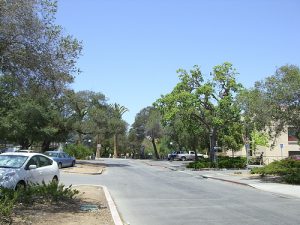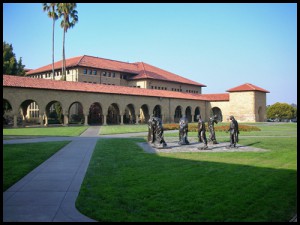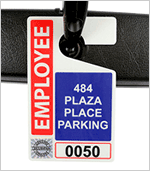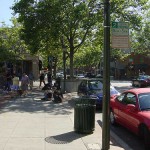Stanford avoids paying $100 million for parking garages
Despite enlarging its campus by 20 percent and its employee and student population by 25 percent in the last decade, Stanford University in Palo Alto, CA, hasn’t seen a rise in traffic. In fact, the number of university staff and students making single occupancy vehicle trips has decreased almost 30 percent in that time: from 72 percent in the early 2000s to almost 40 percent, according to the last reported data. What has increased: the number of commuters choosing alternative forms of transit. These trends have helped the elite institution save $100 million it may otherwise have spent on parking garages, a capital cost common at other universities.

Stanford has greatly reduced its parking demand enough to save a hundred million dollars in parking garages. From 22n.
A “trip cap” imposed in 2000 by Santa Clara County, where Stanford is located, motivated the university to seek such savings. The cap required it to keep vehicle trips constant or else pay for unwanted road construction. Other restrictions—limited resources and a fixed, spatially constrained location in a pricey housing market unfriendly to staff and students alike—also prompted the university to explore new ways of managing transportation demand.
Indeed, such limitations make colleges and universities the perfect petri dishes for transportation innovation, says Jeffrey Tumlin of transportation planning firm Nelson\Nygaard.
Tumlin, who managed transportation programs at Stanford during the mid-1990s, told DC Streetsblog in April that even “well-funded institutions have to make a choice about putting money into parking or putting money in a classroom.”
Opting for the latter, Stanford began implementing transportation programs that surpass even those developed by the most progressive cities and states. For instance, it offered to pay staff $90 each year not to drive to campus, an incentive that convinced many to try public transit, carpooling, or biking. In comparison, the annual cost of a parking space can run approximately $650 for surface spots in suburban sites to more than $4,000 for structured spaces in urban locations, according to the Victoria Transport Policy Institute.
The university also raised its parking prices 15 percent and invested $4 million in bicycling improvements, such as converting a main campus road into a bike and transit mall. That move alone compelled 900 motorists to abandon their cars for bicycles, as reported in Transportation and Sustainable Campus Communities by Will Toor and Spenser Havlick. Parking facilities for that same group would have cost $18 million.

Stanford has used a stew of creative subsidies and incentives to avoid having to build the parking. From Lee Brimelow.
Other changes made by the university include the creation of a free Commute Club, which allows members to receive up to $300 annually, including up to $102 per year in Zipcar bonus driving credit. Stanford also offers subsidies on folding bikes and vanpools, as well as free shuttle services. In fact, its Marguerite Shuttles are far and away the mostly heavily used transit shuttles on the Caltrain line.
The City of Palo Alto, which may need to spend $100 million to build parking garages for its downtown if current transportation policies remain in place, might consider looking to its most famous educational institution for other solutions.






















